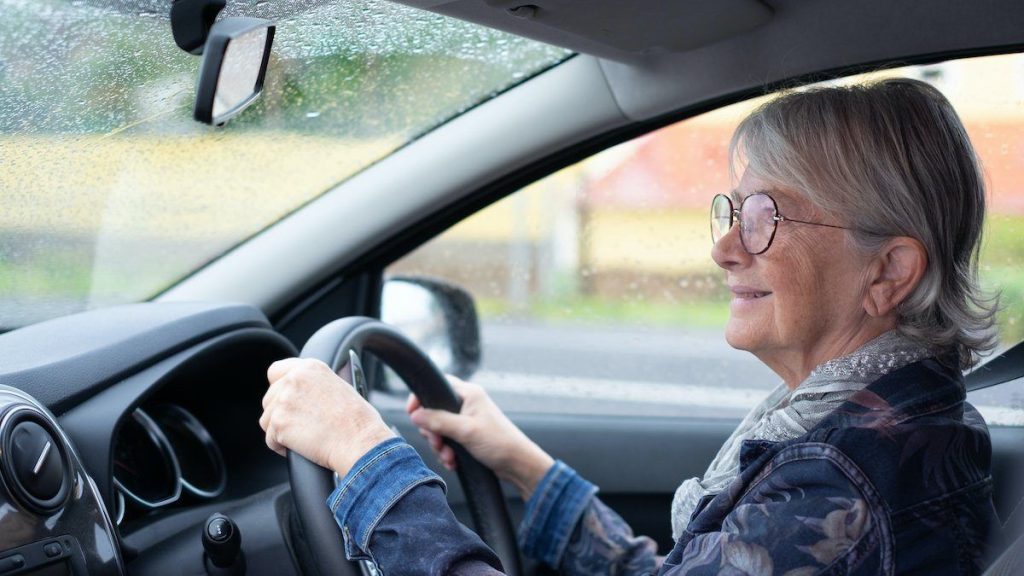From 05 October 2025, the UK government will roll out new driving regulations specifically targeting drivers aged 70 and above.
These updates, introduced by the Department for Transport (DfT) and the Driver and Vehicle Licensing Agency (DVLA), aim to improve road safety while ensuring that older motorists can continue to drive confidently and independently.
With more than 4 million active drivers over 70 in the UK, these changes will affect a significant part of the population. The government’s focus is to create a fair balance between safety, independence, and public confidence on the roads.
Why the New Rules Are Being Introduced

The UK already has one of the safest road networks globally, but government data indicates that age-related health factors — such as declining eyesight, slower reaction times, and reduced mobility — can influence driving performance.
Officials have emphasized that the purpose of the new policy is not to discourage seniors from driving, but to introduce stronger safeguards that allow them to stay safe for longer.
Transport Minister Rachel Maclean stated that these measures are part of a long-term effort “to modernize road safety laws, focusing on health-based competence rather than age-based restrictions.”
Overview of the New 2025 Senior Driving Rules
The new framework for senior drivers introduces several key updates across the board. Starting 05 October 2025, older motorists will need to follow five main changes:
- Mandatory medical fitness declarations at age 70 and every three years afterward.
- Enhanced vision testing with verified results.
- Stricter licence renewal process — with both digital and postal renewal options.
- Driving assessments for individuals flagged with health-related concerns.
- Updated insurance requirements tied to medical and visual health reports.
Together, these rules are designed to create a more reliable system that identifies risks early while supporting responsible senior drivers.
Medical Fitness Declarations Now Mandatory
Under the current system, drivers self-declare their medical fitness when renewing their licence at 70. From October 2025, this process becomes more rigorous.
Drivers turning 70 will need to submit medical evidence confirming they are fit to drive.
Conditions such as diabetes, epilepsy, heart disease, or neurological disorders will require official documentation from a registered medical professional.
If a doctor identifies a condition that could impact driving, the DVLA may require an additional approved medical test. This ensures that only medically fit individuals remain on the road — protecting both the driver and other motorists.
Stricter Vision Testing Requirements
From 2025, vision tests will become compulsory for all senior drivers aged 70 and above.
To maintain their licence, drivers must prove they can read a number plate from 20 metres away and pass a standardized eye examination every three years.
In addition, optometrists will need to submit certification confirming that the driver meets the minimum legal eyesight standards for driving.
This change comes after research showed that thousands of road accidents each year involve drivers with undiagnosed or untreated vision issues.
Licence Renewal: A More Detailed Process
At present, drivers over 70 renew their licence every three years by completing a simple form.
From 05 October 2025, renewals will require comprehensive updates on both medical and vision health.
Renewal options will include:
- Online application: For those comfortable using the internet.
- Postal renewal: For seniors preferring paper documentation.
- In-person assistance: Available through DVLA service points and select local councils.
This hybrid approach ensures accessibility while improving accuracy and compliance.
Driving Assessments for Health-Flagged Drivers
Under the new framework, if the DVLA, a medical professional, or a concerned family member raises doubts about a senior driver’s competence, the individual may be asked to take a driving capability assessment.
Unlike a formal driving test, this assessment focuses on real-world driving skills — evaluating observation, control, awareness, and reaction under normal traffic conditions.
If the evaluation identifies minor limitations, a restricted licence may be issued. For example:
- Driving only during daylight hours.
- Avoiding motorway driving.
- Restricting travel distance or time.
These flexible measures allow seniors to continue driving safely while addressing specific risks.
Insurance Policy Changes for Senior Drivers
Insurance companies are expected to update their criteria following these rule changes.
Drivers with particular medical conditions may need to submit medical or vision clearance before coverage is approved or renewed.
While premiums might rise slightly for high-risk individuals, healthy and compliant drivers should see minimal changes.
Experts say these reforms are designed to enhance transparency between insurers, drivers, and healthcare providers — ultimately improving safety for everyone on the road.
Balancing Safety and Independence
For many seniors, driving is a lifeline — essential for maintaining social connections, visiting family, and attending appointments.
The government has stressed that the new rules are not meant to limit independence but to empower seniors to drive safely for longer.
By incorporating medical support, vision checks, and training programs, authorities aim to ensure that age alone never becomes a barrier to mobility.
Support Programs for Older Motorists
To help seniors adapt to the upcoming changes, the government and charities are expanding several support initiatives:
- Free refresher driving courses offered by local councils and motoring organizations.
- Mobility advice centres that provide personalized guidance on safe driving or transitioning to public transport.
- Awareness campaigns highlighting the importance of regular health checks.
These initiatives will play a vital role in maintaining seniors’ confidence and safety behind the wheel.
Role of Families in Senior Driving Decisions
Family members often face the difficult task of discussing driving safety with elderly relatives.
The new rules aim to make this process less emotional and more objective by relying on professional medical assessments instead of personal judgment.
This approach helps avoid family conflict while ensuring that loved ones remain safe and independent for as long as possible.
Concerns from Senior Advocacy Groups
While many safety experts have welcomed the changes, some senior rights organizations have expressed concerns about potential bias.
They argue that older drivers are being unfairly targeted, noting that younger age groups statistically cause more accidents.
Others worry that the costs of medical exams or vision tests could create a financial burden for pensioners.
In response, the government has pledged to subsidize certain medical assessments and ensure the process remains fair and affordable.
How Senior Drivers Can Prepare Before October 2025
Seniors who wish to stay ahead of the new regulations can take several steps:
- Book regular eye exams and keep prescriptions updated.
- Consult with your GP about any medical conditions that may affect driving.
- Renew your licence early if it expires before October 2025.
- Take a refresher course to boost confidence and reaction times.
- Review your car insurance policy and declare any new health conditions.
Proactive preparation can ensure a smooth transition when the new system takes effect.
Alternatives to Driving: Staying Mobile Without a Car
For those who eventually choose to stop driving, there are many alternatives to stay mobile and independent.
These include:
- Free or discounted public transport passes for seniors.
- Community transport programs run by local councils.
- Volunteer driver networks and taxi vouchers for essential trips.
- Ride-sharing and accessible transport apps tailored to older users.
Exploring these options early can help reduce the emotional and practical impact of giving up driving.
The Government’s Long-Term Road Safety Vision
The new senior driving policy is part of the UK’s broader “Vision Zero” initiative — an ambitious plan to eliminate all road deaths and serious injuries by 2050.
By integrating medical accountability, technology, and education, the government hopes to make roads safer for all users.
It also aims to prepare drivers for future innovations, such as automated and semi-autonomous vehicles, which may further enhance safety for elderly motorists.
Balancing Safety, Freedom, and Fairness
The debate over age-based driving rules always centers on one question — how to balance safety with fairness.
The upcoming 2025 regulations avoid blanket restrictions based on age and instead focus on individual fitness and capability.
This personalized approach is widely viewed as a progressive step forward, allowing healthy and responsible seniors to retain their driving privileges while introducing safeguards for those with declining health.
The message from the DVLA is clear: driving at 70 and beyond is not just possible, but encouraged — as long as it’s safe.
(5) Frequently Asked Questions (FAQs)
Q1. What are the new senior driving rules starting from October 2025?
From 05 October 2025, senior drivers aged 70 and above must undergo medical fitness checks, vision tests every three years, and a more detailed licence renewal process.
Q2. Do I have to stop driving after turning 70?
No. The new rules are designed to help seniors continue driving safely, not to restrict them. As long as you meet the medical and vision standards, you can keep driving.
Q3. Will I need a doctor’s certificate to renew my licence?
Yes, if you have certain medical conditions like diabetes, epilepsy, or heart disease, you’ll need official medical confirmation before renewal.
Q4. How often will vision tests be required under the new rules?
All drivers over 70 will need to complete a vision test every three years to ensure they meet the DVLA’s legal eyesight standards.
Q5. Will these rules increase car insurance costs for older drivers?
Insurance premiums may rise slightly for seniors with specific medical conditions, but healthy drivers are unlikely to see major changes.




















